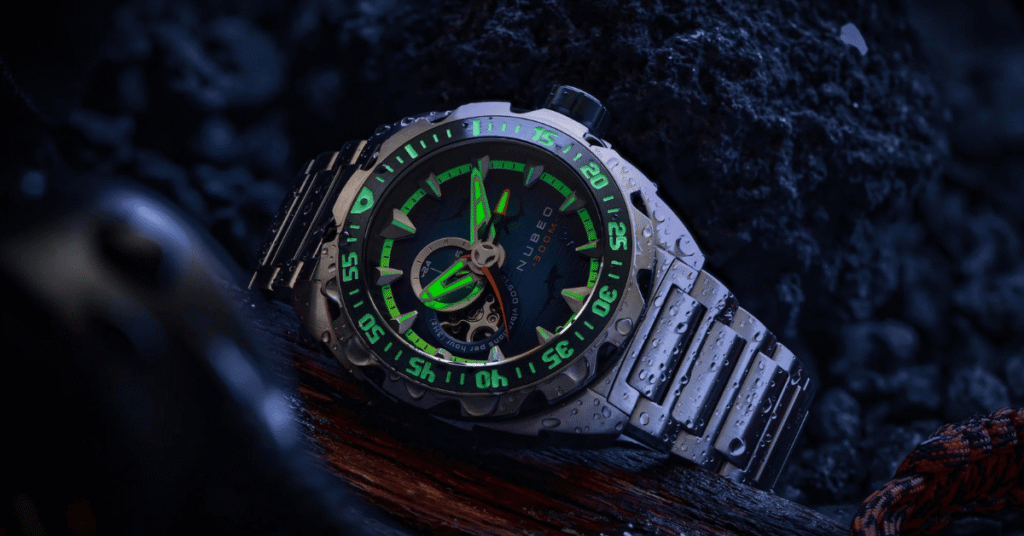The term “radium watch” may spark curiosity in both history lovers and those intrigued by vintage timepieces. A radium watch is a timepiece that used radium-based luminescent paint to make its numbers and hands glow in the dark. These watches were once revolutionary, allowing visibility at night or in poor lighting conditions. However, their initial promise was later shadowed by significant health risks, especially for the workers who manufactured them. Today, radium watches hold a unique place in the collective memory of science, fashion, labor rights, and industrial innovation. This article explores their origin, usage, controversies, evolution, and the legacy they left behind—making it essential for readers who want both historical depth and modern perspective on a subject that still glows in both literal and metaphorical ways.
Radium watches first emerged in the early 20th century, when radium was hailed as a scientific marvel. Introduced by companies like the United States Radium Corporation, these watches became symbols of technological advancement. They found particular favor among military personnel during World War I and II, allowing soldiers to read time discreetly in the dark. The luminescent glow fascinated consumers and created a booming market for radium-dial watches. However, this innovation came at a terrible cost. The women who painted the dials—often instructed to lick their brushes into fine points—suffered horrific radiation poisoning. Their suffering eventually led to landmark labor rights cases that redefined workplace safety standards across the globe.
Despite their grim legacy, radium watches remain popular among collectors, scientists, and historians. They offer insights not just into technological advancement but also into the ethics of innovation and the cost of progress. Their story weaves together elements of beauty and danger, science and exploitation, making them a compelling subject for anyone interested in how objects shape, and are shaped by, the human story.
The Scientific Beginnings of Radium
Radium was discovered in 1898 by Marie and Pierre Curie while studying uranium’s radioactive properties. What made radium unique was its intense radioactivity and its glow-in-the-dark phosphorescence. It was seen as a miracle element—capable of illuminating objects without external light. This property led scientists and manufacturers to explore commercial applications quickly.
By 1910, the idea of using radium in paints became reality. Mixed with zinc sulfide and a binding agent, radium produced a consistent glow that could last for decades. This innovation was not only embraced by clockmakers but also by instrument manufacturers, aircraft designers, and military equipment producers. From aircraft dashboards to submarine panels, radium’s ability to glow continuously without the need for batteries made it revolutionary.
The success of radium in commercial products signaled a new era of design—one where visibility in the dark could be achieved without external light sources. It also marked the first time radioactive substances became a part of everyday consumer goods. While today this might sound alarming, in the early 20th century, public understanding of radiation and its effects was minimal, and radium was considered not only safe but even therapeutic.
Industrial Growth and Radium Dial Factories
As demand for luminescent products surged, radium dial painting factories sprang up across the United States and Europe. Companies like the United States Radium Corporation, Radium Luminous Materials Corporation, and others employed hundreds of mostly female workers known as “radium girls.” These women were trained to paint tiny numbers on watches with fine brushes, often instructed to shape the brushes using their lips.
The working environment was deceptively cheerful. The glow-in-the-dark effect delighted workers, and some even painted their nails and teeth with the substance for fun. Employers reassured them that radium was completely harmless. In reality, they were exposed daily to highly radioactive material without protective gear or ventilation.
At the time, regulatory oversight was almost non-existent. The companies profited enormously while ignoring emerging medical evidence that radium exposure could be harmful. This negligence would soon catch up with them as the first cases of radiation poisoning emerged among factory workers.
Tragedy and the Radium Girls
By the early 1920s, many dial painters began suffering from unexplained health issues—loose teeth, bone fractures, and jaw necrosis became common. The cause was internal radiation exposure from ingesting small amounts of radium daily. As more women fell ill, their cases drew public attention and scientific scrutiny.
One of the most famous legal battles was that of Grace Fryer and her fellow workers against the United States Radium Corporation. The case, settled in 1928, became a landmark in labor law. It was one of the first instances where workers successfully sued a corporation for occupational illness. The trial exposed the hazardous conditions in the factories and forced regulatory bodies to reconsider safety standards for radioactive materials.
These women became symbols of both scientific caution and feminist labor activism. Their bravery in standing up to powerful corporations altered the trajectory of labor rights and workplace safety. In modern historical narratives, the Radium Girls are remembered not just for their suffering but for their enduring impact on worker protections.
Cultural Allure and Aesthetic Appeal
Even amid controversy, radium watches retained their cultural and aesthetic value. The idea of owning a self-illuminated watch remained irresistible to consumers. The glow, often greenish or bluish, provided both functionality and mystique. Military users especially found the feature useful, while civilians viewed it as a novelty.
Designers continued to refine the styles of radium watches, embedding them with sleek metal frames, art deco numerals, and high-contrast hands. Radium paint allowed for creative liberty, enabling manufacturers to highlight logos, dials, and decorative elements. The watches were often marketed with themes of modernity, adventure, and scientific advancement.
Vintage radium watches from the 1930s to 1950s are still widely sought after by collectors for their unique look and historical value. Their glow has faded, but the dial often retains a faint luminescence—remnants of a bygone era when scientific curiosity overrode caution. These watches are now both collectible artifacts and cautionary tales.
Health Risks and Regulatory Changes
As the dangers of radium became undeniable, scientists and health regulators began to impose stricter guidelines. By the 1940s and 1950s, safer alternatives like tritium and promethium were developed to replace radium in luminescent paints. These substitutes emitted less radiation and posed fewer health risks.
The U.S. Atomic Energy Commission and later the Nuclear Regulatory Commission introduced safety protocols for handling radioactive materials. This included sealing radioactive substances in airtight capsules and implementing workplace protections. The era of casual handling of radioactive paint had ended, but the legacy of radium continued to influence radiation safety for decades.
Radium’s health risks include bone cancer, anemia, and jaw necrosis—especially from ingestion or prolonged exposure. Modern researchers also studied the long-term radiation effects on collectors of vintage watches. While owning a radium watch does not usually pose immediate danger, experts advise caution, particularly with broken or tampered watches where radium dust might be inhaled or absorbed.
Table 1: Comparison of Luminescent Materials in Watch
| Material | Introduced | Glow Duration | Radiation Level | Health Risk | Common Use Period |
|---|---|---|---|---|---|
| Radium | 1910s | 1000+ years | High | Severe (if ingested) | 1910s–1960s |
| Tritium | 1950s | 10–20 years | Moderate | Low to moderate | 1950s–present |
| Promethium | 1960s | 1–5 years | Low | Minimal | 1960s–1980s |
| Luminova | 1990s | Hours (rechargeable) | None | None | 1990s–present |
The Collector’s Market for Radium Watch
Today, radium watches are highly collectible items for enthusiasts of vintage timepieces, military memorabilia, and scientific artifacts. Their value depends on brand, condition, military history, and dial design. Brands like Elgin, Westclox, Hamilton, and Rolex have models that fetch high prices at auctions and watch fairs.
Collectors are drawn not just by aesthetics but also by the story each piece carries. Many watches are tied to specific military units or historical moments, increasing their desirability. However, buyers must be aware of potential radiation exposure. Some choose to seal their watches in protective containers, while others opt to display them without opening or repairing the dials.
Museums and scientific institutions often house radium watches in special containment units. This serves both to preserve the artifacts and to educate the public on radiation’s historical applications. Some collectors even work with radiologists to test the activity levels of their watches before deciding on safe display methods.
Table 2: Safety Guidelines for Handling Radium Watch
| Action | Safety Recommendation |
|---|---|
| Opening the watch case | Avoid unless by trained professionals |
| Wearing regularly | Not recommended for extended periods |
| Displaying at home | Keep in sealed glass case, away from children |
| Transporting or shipping | Use padded, labeled containers with warnings |
| Storage | Store in cool, dry area with limited access |
| Testing radioactivity | Use Geiger counter; consult experts |
Modern Alternatives and the Return of Safe Glow
Though radium is no longer used in consumer products, the desire for glow-in-the-dark watches remains strong. Modern luminescent watches use non-radioactive compounds like Super-LumiNova, which absorb light during the day and emit it in the dark without radiation. These materials are safer and widely adopted in both luxury and casual watches.
Tritium, a mildly radioactive isotope of hydrogen, is still used in some tactical and military watches. It is sealed in glass tubes and considered safe under normal conditions. Brands like Luminox and Traser continue to manufacture tritium watches for professionals who need constant visibility without relying on external light.
As awareness of safety grows, consumers are more discerning. While the nostalgia of radium remains, most buyers prefer modern materials that provide the glow without the risks. The luminous charm of radium, once dangerous, now lives on in safer, smarter forms of luminescence.
Cultural Echoes and Literary Symbolism
Radium watch are more than mechanical objects—they are symbols of a complex era when innovation outpaced caution. They’ve been referenced in literature, art, and film as metaphors for beauty mixed with danger. The haunting stories of the Radium Girls have inspired books, plays, and documentaries, reminding audiences of the human cost behind scientific progress.
In postmodern critiques of the industrial era, radium watches often symbolize the collision between capitalism and ethics. Their glowing dials represent both the literal light of innovation and the figurative darkness of corporate neglect. The stories they tell go beyond timekeeping—they encapsulate how ambition, ignorance, and resistance have shaped the modern world.
As Susan Sontag wrote, “Illness is the night-side of life.” In the case of radium watches, that night-side literally glowed. And while we no longer paint with radium, we still look to these timepieces as luminous cautionary tales.
Conclusion: The Glow That Time Couldn’t Dim
Radium watches tell a story that is as luminous as it is sobering. From their genesis in scientific discovery to their rise in popularity, followed by the heartbreak of the Radium Girls and the evolution of modern safety standards, these timepieces represent a pivotal intersection of progress and peril. Their glow, once a symbol of innovation, became a beacon for justice and a catalyst for reform.
Today, they endure as collectibles, historical case studies, and cultural metaphors. Whether resting in a museum display or ticking quietly in a collector’s case, each radium watch is a reminder that even the brightest ideas can cast long shadows. They are timekeepers in the most profound sense—not just measuring hours, but marking epochs in human consciousness.
“We were the living dead,” said one of the Radium Girls, capturing the tragic irony of a life marked by luminous paint.
As science writer Deborah Blum noted, “What glowed was not just the paint, but the injustice itself.”
And yet, through their suffering and legacy, the Radium Girls ensured that the future would not glow blindly.
FAQs
1. Are radium watch still dangerous today?
If intact, they are low-risk, but broken dials can emit hazardous radiation dust.
2. Can you legally sell or own radium watches?
Yes, but safety precautions are strongly recommended, especially for display or resale.
3. Why did radium glow in the dark?
Radium’s radiation excited phosphorescent compounds like zinc sulfide, creating a lasting luminescence.
4. What replaced radium in modern watches?
Materials like Super-LumiNova and tritium offer safe luminescence without hazardous radiation.
5. Can radium watches be repaired?
Only by trained professionals using containment protocols, as dust from old dials can be radioactive.







